Are you considering spooling braided line on a spinning reel, but aren’t sure whether or not it is a good idea?
Many fishermen have the same dilemma. What worries them are their colleagues’ reports that braided fishing line often slips off of a slick aluminum spinning reel spool. So, does it really happen?
Yep! Braid slipping off the spool is an actual problem for many anglers and quite a few big fish have been lost due to this issue. However, this doesn’t mean you should not combine a braided fishing line and a spinning reel. It is actually an excellent union that can help you catch more fish.
As long as you do it right and secure enough backing line, combining a braid line and a spinning reel is highly advantageous! So, let’s learn more about it!
Should You Use Braided Line With A Spinning Reel?
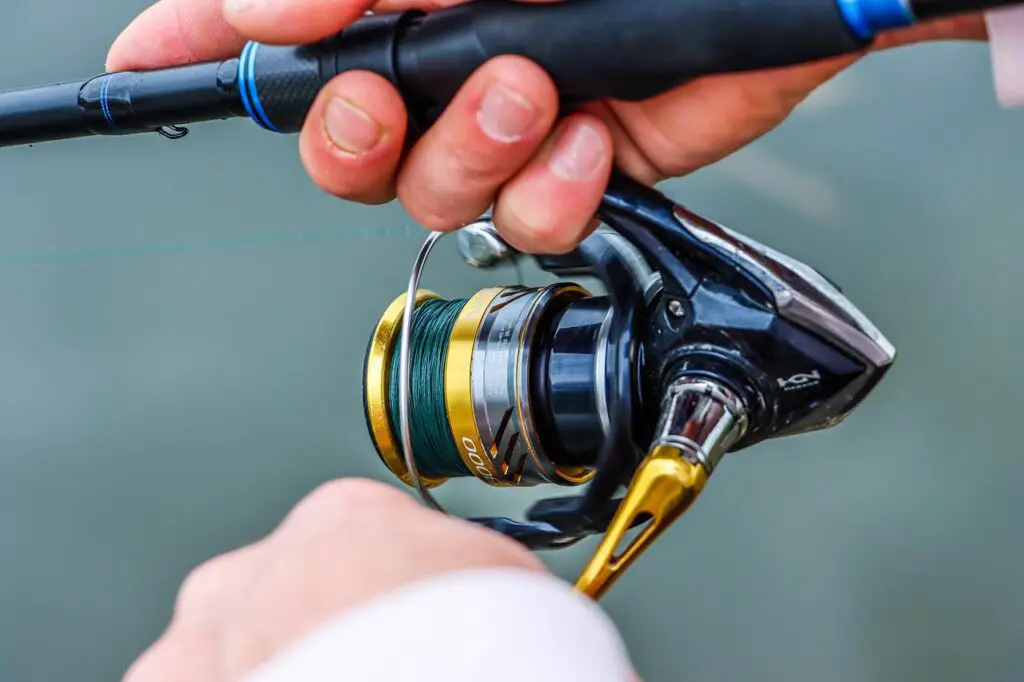
As we have already established, it is beneficial to spool braid line onto a spinning reel. As long as you spool your braid with suitable backing or use a braid-ready reel, this combo will bring you only good.
Braid slippage is a nuisance. Yet, you can avoid it with a little bit of know-how. You can do a few things to prevent your braid from slipping off the aluminum surface of your spool. However, before you try anything, you need to understand why it happens in the first place.
Unlike mono fishing lines, braided lines have a cloth-like exterior that feels a bit slippery and can thus easily slither off the spool. When this happens, the entire spool of braid line peels off the reel and starts rotating around it.
At this point, it becomes impossible for anglers to retrieve their line by turning the handle, destroying all their chances of bringing the hooked fish in.
Let’s see how to prevent this problem!
How To Prevent Braided Line From Slipping Off Your Spinning Reel
There are a few methods to avoid braid line coming off your spinning fishing reel. Let’s see what those are!
Use A Mono Backing
As I have already implied, monofilament lines do not have the same problem with slippage. On the contrary, they firmly stick to the slick aluminum exterior of your reel’s spool. All you need to do is secure the mono line directly to the spool via an arbor knot, and you are good to go! An arbor knot is simple to tie, yet highly effective.
How does this help if you want to use braid?
Instead of spooling the braid line directly, use sufficient monofilament backing to provide adequate grip and prevent slippage. It is of great help!
Besides, this is also a budget-friendly solution. Namely, braided lines are considerably more expensive than monofilament fishing lines. Hence, use a monofilament backing and fill only the upper half of the spool with a pricey braid to save money.
There is more good news! Monofilament lines are very durable – that means you can use the same mono backing for ages. All you need to do is to re-spool your braid with a new line after a couple of years.
If you have a dilemma about which knot to use to connect the mono backing to the braid, try the Double Uni knot. Watch the following video to learn how to tie it:
Use A Braid-Ready Spinning Reel
The easiest solution to the braid slippage problem is to purchase a braid-ready spinning reel. This type of reel features a spool arbor with a rough surface and thus provides a better grip.
Braid-ready reels typically feature horizontal grooves to increase friction. Some models have a rubber band for additional grip.
If you buy such a reel, you can tie your line directly to your spool – no need for backing!
However, my advice is to combine the two. Braid-ready reels do work well most of the time but do not 100 percent prevent line slippage. So, better be safe than sorry and use mono backing as well.
How can you recognize a braid-ready reel? It’s easy. Look at the surface of the arbor to see if there are regularly spaced grooves or a rubber ring. It is best if a reel has both!
Put Adhesive Tape On The Arbor Of The Spool
One of the best fishing tips I’ve ever received is to anchor the knot to the reel’s spool with some adhesive tape. I usually use electrical tape and cover the surface of my arbor to secure enough grip and avoid slippage when I am on the water.
Using tape means you are saving money too! Why? Well, you can use any spinning reel you have instead of purchasing a braid-ready reel. Besides, you can simply tie your line directly to the spool – no need for using a backing line!
The only downside to this approach is that the glue on the electrical tape wears off over time. When it happens, the tape loses its hold, comes off, and starts revolving with the braid line. This is a clear signal it is time to replace the tape. In my experience, it usually takes more than a year for this to happen.
How Much Backing Do You Need For A Braided Fishing Line?

You can prevent many problems by learning how to put the line on your spinning reel. First, you must learn how full to fill your spool.
If you make a mistake and overfill the spool, the line is most probably going to flow off of it as soon as you open the bail. If, on the other hand, you underfill it, you will diminish your casting distance.
So, what is the optimum level? Spinning reels should be filled to about 1/8 of an inch from the outer edge of the spool lip. If you honor this, you’ll be able to launch long casts and retain the line. This brings us to the crucial question: how much backing and braid line should you use?
Depending on your reel’s size, line capacity, and the diameter of the line you are using, you’ll need between 50 and 100 yards of monofilament backing. The goal is to leave enough space for at least 100 yards of braid.
Make sure you have appropriate fishing pliers on hand. The braided line is quite tough and can mess up your scissors.
If you use an extra-large spinning fishing reel (size 6000 or above), there is no need for backing. Yet, always consider what fish you are targeting and try to predict how much line it can strip off your spool while you battle it.
What Size Braid Is Best For Spinning Reels?
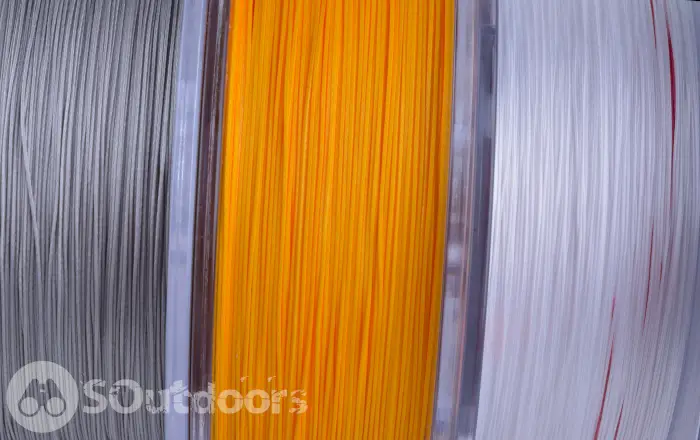
You can use all braid line sizes to spool a spinning reel. All braid classes are compatible with spinning reels.
So how should you choose your test weight?
To choose the best test weight, you must consider the fish you are planning to catch and try to match its weight (e.g. use a 4-pound test line for trout and a 30-pound test line for tuna). You can always find the line test weight advice on the side of the spool.
The Advantages Of Braided Line Over Mono Line
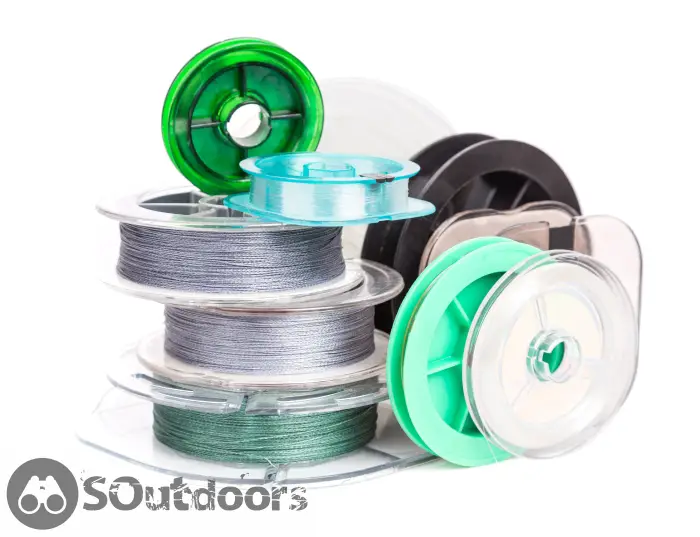
As you now know how to spool braid, it is time to discuss all the advantages of using a braid line on a spinning reel. Let’s see why braid is a better option than mono in some fishing applications!
Zero Stretch
Filling spinning reels with a braided line provides you with better sensitivity because the braid has almost zero stretch. It is thus an ideal choice for finesse fishing. Being less elastic than mono is also an advantage when hooking large fish at long distances (15 feet and up).
Fewer Line Twists & Wind Knots
A braided line is not as prone to line twist problems as a mono fishing line since it has no line memory. However, you need to remember one important thing to eliminate any risk of a line twist: when spooling a braided line on a reel, unwind it in a counterclockwise direction (label side up)!
Not sure how to do it? Watch the video below:
The lesser the risk of a line twist, the lesser the chance of annoying wind knots! It means you can enjoy fishing without having to stop and untangle your spinning reel.
If you want to learn more about preventing a line twist or a wind knot, watch the following video:
Natural Presentation
Due to its smaller diameter, braided line secures less friction and dragging and provides a more natural presentation. The smaller diameter also enables you to put more line onto a smaller reel.
Extra Durability & Strength
Braided line is stronger than mono of the same diameter and can last at least a couple of years without being changed. Mono is known to degrade when you expose it to the sun and thus has to be replaced more often than braided lines.
The Advantages Of Mono Line Over Braided Line
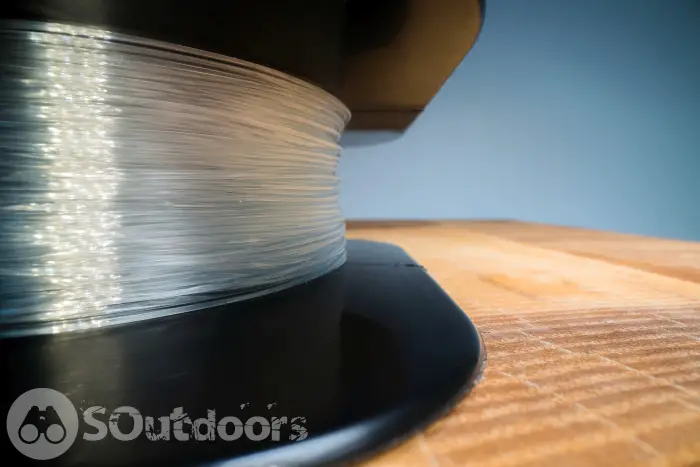
Budget-Friendly Price
Monofilament is less expensive than braid and thus suitable for low-budget anglers. If you are a beginner, an occasional angler, or you do not plan to target large fish such as tuna, marlin, or northern pike, there is no need to pay extra for the braided line.
No Need For Backing
You can spool mono directly onto the reel – there is no need for backing. It makes spooling much easier!
No Need For A Leader
Braided line is highly visible in the water. Thus, you should best use a mono leader or a fluorocarbon leader for tying a lure and not frighten the fish. You do not face this issue when using mono. As it is almost invisible in the water, you may fasten mono directly to your lure or bait.
FAQs
Is braid line good for spinning reel?
Braid line is good for spinning reel. In fact, it is one of the best choices you can make due to its superior strength, durability, small diameter, casting distance, and zero stretch.
What size braided line should I use for a spinning reel?
The recommended size braided line you should use for a spinning reel is 10 to 30 lb. However, it is highly recommended to match line test weight with the weight of your targeted fish. Hence, if you plan to catch a 4-pound trout, use a 4-pound test line, too.
Will braided line damage my rod?
Braided line will not damage your rod. In the past, braided line often damaged fishing rod guides. Yet, modern braids and rods have been redesigned to eliminate this issue. As a result, you can safely use modern braids with most fishing rods and their guides.
Should you wet braid before spooling?
You should wet the braid before spooling if you want to avoid the inconvenience of inconsistent tension. It can also help you avoid a wind knot when casting in windy conditions. Wetting the braid helps save some line too.
Using Braided Line On A Spinning Reel – Wrapping Up
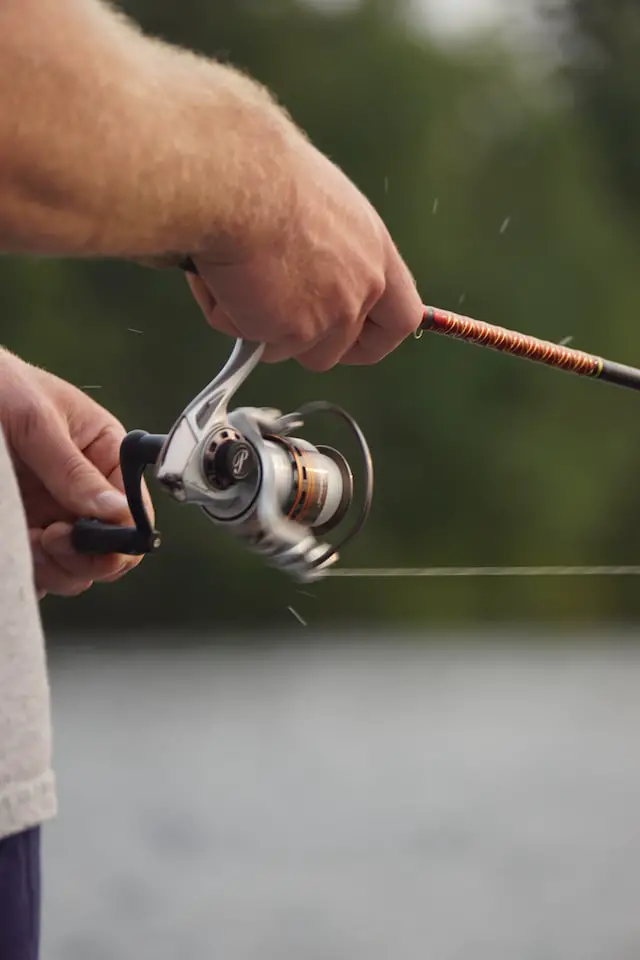
Spinning reels and braided lines work pretty well together. So feel free to use this combo for any fishing adventure – it will bring you success!
You now have the know-how to avoid common problems such as line slippage or annoying line twists. If you have any questions or need help finding the best braided fishing line for your application, reach out to me in the comment section. I am at your disposal at all times!
